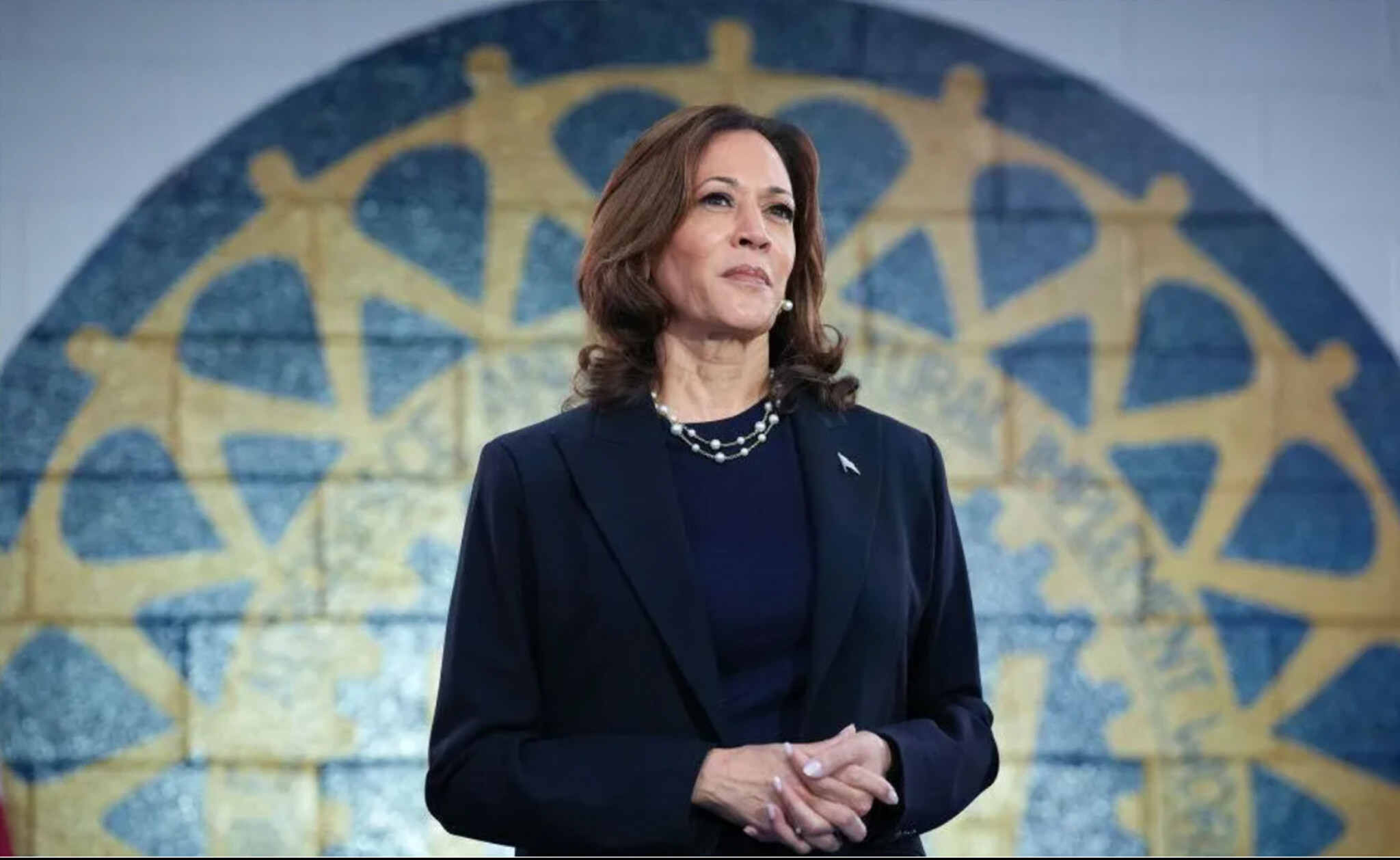In a recent appearance before the National Association of Black Journalists, Republican Presidential candidate Donald Trump caused a furore by questioning the racial “identity” of Democrat Kamala Harris. “Is she Indian or is she black?” Trump wondered. “I respect either one, but she obviously doesn’t, because she was Indian all the way, and then all of a sudden she made a turn, and she became a black person.”
Lost in the days of press attacks that followed was the fact that both Trump and his critics were stuck in an outdated American electoral calculus of identity politics grounded in race. In fact, the key to a Harris win in November won’t be the support of black Americans or Indian Americans or even “brown Americans” — though she has identified at various points in her political life as all three. Rather, Harris is a flesh-and-blood avatar of a much more numerous, powerful, and radically dissatisfied demographic: never-married and childless American women between the ages of 20 and 45.

Aside from mass immigration, the most striking demographic development of the past decade is the large cohort of American women who have embraced the helping hand of the state in place of the increasingly suspect protections of fathers, brothers, boyfriends and husbands. In doing so, they have become the Democratic Party’s most enthusiastic and decisive constituency. According to a recent Pew survey, these Brides Of The State (BOTS) support Democrats over Republicans by a whopping 72-24%, providing the Party with its entire advantage in both national and most state elections. Married American women, by contrast, support Republicans by 50-45, which more or less matches the pro-Republican margin in every other age and gender demographic. Without the overwhelming support of BOTS for the Democrats, in other words, America would be a solid-majority Republican country in which Trump would win a likely electoral landslide.
The Democratic Party’s political engineers first sensed the centrality of BOTS to the Party’s power base during Barack Obama’s re-election campaign in 2012. The Obama campaign then duly rolled out a storybook ad called “The Life of Julia”, which explained how Obama’s policies, from Head Start to Obamacare to contraception coverage to Medicare reform, would care for Julia from graduation through motherhood and finally to the grave without her needing to form a human relationship with anyone outside the government.
Julia’s life was defined by her interactions with the state, with each step of her life tied to a particular government programme. She is able to pursue her chosen career as a web designer because, at age 27, “her health insurance is required to cover birth control and preventive care, letting Julia focus on her work rather than worry about her health”. At age 31, Julia changes her mind about birth control and “decides to have a child” — a decision that apparently involves no partner aside from the state. The resulting progeny, Zachary, attends a Race to the Top Federally-funded public school — which allows Julia to start her own business. At age 67, Julia retires with the financial support of Social Security and Medicare, and spends her partner-less golden years volunteering in a community garden.
While the Julia campaign was a subject of some mockery in 2012, the Obama campaign was in fact ahead of the curve. When Joe Biden was elected in 2020, he made the fictional “Linda” the avatar of his “Build Back Better” campaign. More blue-collar than Julia, in keeping with Biden’s lunch-pail Democrat persona, Linda earned $40,000 annually working at a manufacturing facility in Peoria, Illinois — an income that was a little more than $10,000 short of the city’s median salary. However, Linda had no need for a second income in her home, thanks to the government — which gave her $3,600 annually in the form of a Build Back Better tax credit. Her son, Leo, who like Zachary appears to have been fathered by an anonymous bureaucratic sperm donor, began universal pre-K by age three and enjoyed a free educational ride subsidised by the state — all of which enabled Linda to keep working and Zachary to obtain a “good-paying, union job as a wind turbine technician”. The saga wistfully concludes by describing how, later in life, Linda needs home and hearing care. But fortunately, help is at hand: “Thanks to President Biden’s plan,” it adds, “Linda can access affordable health care through Medicare, and Leo is able to afford at-home elder care for his mom.”
Kamala Harris can fairly be seen as the flesh-and-blood electoral successor to Julia and Linda. Childless, she remained unmarried throughout her professional career until a decade ago, when, aged 49, she tied the knot with a lawyer named Doug Emhoff while preparing her run for the US Senate.
Both Harris’s demographic profile and electoral appeal are, therefore, arguably quite different from the last woman that the Democratic Party nominated to take on Trump. For all those who derided Bill and Hillary Clinton’s marriage as a business deal, it was hard to question the reality that Hillary Clinton was a classic Seventies feminist who was entirely serious about the idea of having it all: she stayed married to her law-school sweetheart through very public ups and downs for nearly a half-century while raising a child and enjoying a notable public career. By contrast, Harris first attracted public notice as the mistress of flamboyant San Francisco Mayor Willie Brown, a married man more than twice her age who rewarded her with an expensive car and public office — a relationship which in turn became a stepping-stone to other public jobs. Julia and Linda, take note.
Harris’s life and career are, therefore, clearly representative of a demographic shift that is remaking the Democratic Party and American society as a whole. An astonishing 22% of women aged 40 or higher in America have never been married, which is the highest percentage since data was collected in 1900. The rise in these numbers is both recent and startling. Throughout the Sixties, Seventies and Eighties, the percentage of American women who remained unmarried by age 40, as Harris was, had remained constant at around 6%. The percentage of black women who have never married by 40 is markedly higher, hovering at 46%. The overwhelming majority of these women vote for Democrats.
The ballot box is hardly the only place that this new demographic is making its unique preferences felt. BOTS have demanded and received not only the female-targeted government grants, educational and jobs programmes, and social safety nets that benefited Julia and Linda and their singular progeny, but also a much broader set of social engineering measures that are fundamentally reshaping American mores. Since the Nineties, young American women have been positioned as the primary beneficiaries of neo-Victorian speech and conduct codes that have fundamentally transformed the behaviour of men and women everywhere from classrooms to workplaces to bars.
BOTS are also the primary beneficiaries of government affirmative action programmes in education and hiring. In fact, in the roughly 60 years since Civil Rights programmes to reduce racial and gender discrimination were introduced in higher education, women have surpassed men in earning four-year degrees, while black and Latino students remain underrepresented.
But have these efforts made BOTS happy? The answer, according to young women, is no. In fact, the demographic that has been the most highly socialised into core progressive values and would seem to benefit most directly from bureaucratic intervention in their lives is also the most miserable group in America. A startling 56% of liberal American women aged 18-29 have been diagnosed with a mental-health condition (the percentage for conservative women is 21%).
What is even more striking is that the enormous happiness gap between liberal BOTS and their conservative peers has only existed for the past decade or so. Analysing an NIH dataset of high school seniors, the researchers Catherine Gimbrone, Lisa Bates, Seth Prins, and Katherine Keyes found that, prior to 2012, when the Obama campaign rolled out Julia, there was no meaningful difference between male or female or liberal and conservative high-school students in internalising symptoms (depressive affect). “We hypothesise that increasing exposure to politicised events has contributed to these trends in adolescent internalising symptoms, and that effects may be differential by political beliefs and sociodemographic characteristics,” the researchers concluded. Noting that liberal female adolescents were by far the most depressed, they suggested that the new ideological lenses through which adolescents were viewing the political climate were affecting their mental well-being.
When the Gimbone study came out, New York Times columnist Michelle Goldberg rejected that view. “Barack Obama was re-elected in 2012. In 2013, the Supreme Court extended gay marriage rights,” she wrote, concluding: “It was hard to draw a direct link between that period’s political events and teenage depression, which in 2012 started an increase that has continued, unabated, until today.” The real culprit, Goldberg suggested, was social media and iPhones. Yet she didn’t explain why social media would have such disparate effects on young women and young men, or why its effects would differ according to political viewpoints.
Enjoy independent, ad-free journalism - delivered to your inbox each week
By blaming technology, Goldberg was clearly avoiding the implication that the victory of liberal ideas itself was helping to make young women miserable — a point made by the feminist writer Jill Filipovic: “Just about everything researchers understand about resilience and mental well-being suggests that people who feel like they are the chief architects of their own life… are vastly better off than people whose default position is victimisation, hurt, and a sense that life simply happens to them and they have no control over their response.”
If Filipovic’s point is persuasive, the Democratic Party’s message for the past decade has been exactly the opposite. Instead of promoting the goal of mental health in young women, and using unbiased research to determine what in fact makes women happy, progressives have been bent on implementing a set of evermore-intrusive top-down social policies that substitute state intervention and protection for the fellowship of human partners of whatever gender.
From the Party’s point of view, at least, the unhappiness and depression of younger, never-married women, which produces outcomes like never getting married or having children, may be less of a bug than a feature: that BOTS are both unhappy and dependent is what makes them a uniquely valuable energy source for the party. Conversely, adopting policies and encouraging social attitudes and outlooks that make women happier and less depressed and anxious would in fact negate the Party’s most significant electoral advantage, and thereby undermine its power — depriving the Party of its most loyal voters and foot-soldiers.
“That BOTS are both unhappy and dependent is what makes them a uniquely valuable energy source for the party.”
Paradoxically, then, the Party’s interest is in telling young women that they are miserable and alone without providing solutions that promote personal happiness, and then transmuting the resultant depression and anxiety into anger, which it then utilises as political fuel for empathy-based social justice campaigns from Ferguson to Gaza. This strategy, whether cunning or simply ad hoc, hardly benefits women, though — either individually or as a class. Instead, it undermines their sense of personal agency, while denying them the tools that any human needs to make themselves happy. That humans find happiness and satisfaction in community is as true for women as it is for men, if not more so. Yet only 35% of American liberals report being a member of a church or place of worship, and 37% of American liberals are currently married — a social arrangement that has been shown to have broad benefits for the mental and physical health of both adults and children at all stages of life (56% of conservatives are married). The idea that the state can make up this apparent happiness gap with Build Back Better grants and assertions of false consciousness on the part of conservative women is a chimera.
These numbers are also likely to get worse. According to Gallup, nearly 40% of young liberal women now identify as LGBTQ — a startling rise in a demographic that was presumed to be relatively constant across most societies over time, regardless of what people told pollsters. Partly as a result, fertility rates in the US, which had long hovered around replacement level (2.1 lifetime births per woman), have plummeted since 2008, to a new European-style low of 1.61. However, this sudden demographic sea-change does not appear to be the result of Americans not wanting to have children. Last year, the share of Americans who said that having three or more kids is the ideal hit its highest point since 1971, at 45%. In the simplest sense, young American women want what their mothers had — but have no idea how to get it.
Why is that? While one might blame everything from the internet to plastics in the water to the exploitation of female misery by the Democratic Party (even if some real share of that misery is caused by anti-family conservative social policy), a more concrete answer may be the impact of not having fathers, particularly on young girls. Here, too, Kamala Harris’s biography — she was raised largely by her mother, who moved her to Montreal from California, where her father still bitterly complains about being separated from his daughters — maps directly onto the larger social turmoil.
When Americans do have children, they now do so out of wedlock more often than ever before in American history, with 69% of black children being born outside of marriage, 52% of Hispanics (up from 34% in 1990), and 28% of whites (up from 15% in 1990). What this means in practice is that an increasingly large percentage of American children are now growing up without regular contact with their fathers — thanks in some large part to the persistence of the “tender years” doctrine that gives mothers custody of young children.
The numbers here, too, are startling. In 1960, 89% of minor children lived with their fathers. The number in today’s America is 73%, with nearly half of African American fathers — like Kamala’s father Donald Harris, an economics professor at Stanford — living apart from their children. There is a plethora of studies that show that children from fatherless homes are more likely to be poor, become involved in drug and alcohol abuse, drop out of school, and suffer from health and emotional problems, with boys more likely to become involved in crime and girls more likely to suffer from anxiety and depression.
One under-appreciated reason why increasing numbers of young American women are confused and miserable, and failing to make choices that promote happiness later in life, may therefore be that increasing numbers of American children grow up without regular contact with their fathers. And contrary to popular stereotypes, the effects of paternal absence, especially in early childhood, are particularly negative for young girls. “In both self-reported and parent-reported data, we found a three-way interaction of gender, age, and parental divorce, indicating that with increasing age, parental divorce became more strongly associated with depressive symptoms among girls, but not boys,” one Dutch study has found. “These results suggest that girls with divorced parents are at particularly high risk to develop depressive symptoms during adolescence.” Subsequent studies have further localised the negative effects on girls to paternal absence in early childhood.
If governments want to stem the tide of misery among young women, which is affecting everything from voting to birth rates, they may wish to do more to keep fathers around — both inside marriages and also in cases of divorce. On the other hand, the Democrats might not win as many elections.




Comments (0)
Only supporting or founding members can comment on our articles.